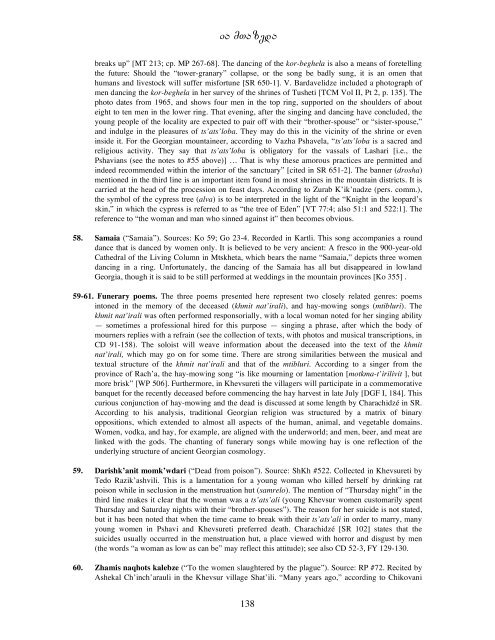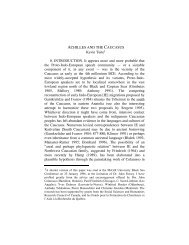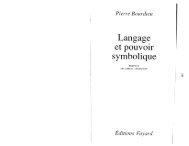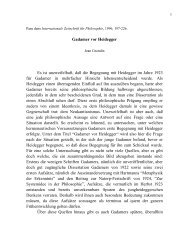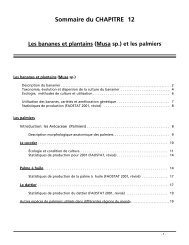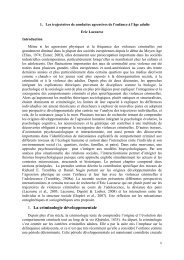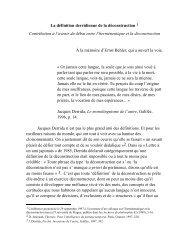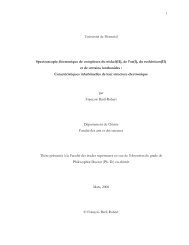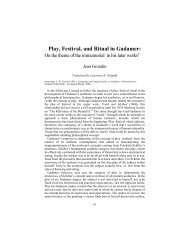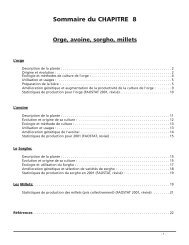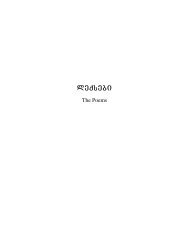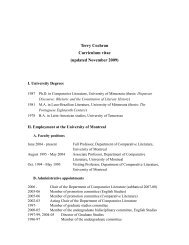You also want an ePaper? Increase the reach of your titles
YUMPU automatically turns print PDFs into web optimized ePapers that Google loves.
ia mtazeda<br />
breaks up” [MT 213; cp. MP 267-68]. The dancing of the kor-beghela is also a means of foretelling<br />
the future: Should the “tower-granary” collapse, or the song be badly sung, it is an omen that<br />
humans and livestock will suffer misfortune [SR 650-1]. V. Bardavelidze included a photograph of<br />
men dancing the kor-beghela in her survey of the shrines of Tusheti [TCM Vol II, Pt 2, p. 135]. The<br />
photo dates from 1965, and shows four men in the top ring, supported on the shoulders of about<br />
eight to ten men in the lower ring. That evening, after the singing and dancing have concluded, the<br />
young people of the locality are expected to pair off with their “brother-spouse” or “sister-spouse,”<br />
and indulge in the pleasures of ts’ats’loba. They may do this in the vicinity of the shrine or even<br />
inside it. For the Georgian mountaineer, according to Vazha Pshavela, “ts’ats’loba is a sacred and<br />
religious activity. They say that ts’ats’loba is obligatory for the vassals of Lashari [i.e., the<br />
Pshavians (see the notes to #55 above)] … That is why these amorous practices are permitted and<br />
indeed recommended within the interior of the sanctuary” [cited in SR 651-2]. The banner (drosha)<br />
mentioned in the third line is an important item found in most shrines in the mountain districts. It is<br />
carried at the head of the procession on feast days. According to Zurab K’ik’nadze (pers. comm.),<br />
the symbol of the cypress tree (alva) is to be interpreted in the light of the “Knight in the leopard’s<br />
skin,” in which the cypress is referred to as “the tree of Eden” [VT 77:4; also 51:1 and 522:1]. The<br />
reference to “the woman and man who sinned against it” then becomes obvious.<br />
58. Samaia (“Samaia”). Sources: Ko 59; Go 23-4. Recorded in Kartli. This song accompanies a round<br />
dance that is danced by women only. It is believed to be very ancient: A fresco in the 900-year-old<br />
Cathedral of the Living Column in Mtskheta, which bears the name “Samaia,” depicts three women<br />
dancing in a ring. Unfortunately, the dancing of the Samaia has all but disappeared in lowland<br />
Georgia, though it is said to be still performed at weddings in the mountain provinces [Ko 355] .<br />
59-61. Funerary poems. The three poems presented here represent two closely related genres: poems<br />
intoned in the memory of the deceased (khmit nat’irali), and hay-mowing songs (mtibluri). The<br />
khmit nat’irali was often performed responsorially, with a local woman noted for her singing ability<br />
— sometimes a professional hired for this purpose — singing a phrase, after which the body of<br />
mourners replies with a refrain (see the collection of texts, with photos and musical transcriptions, in<br />
CD 91-158). The soloist will weave information about the deceased into the text of the khmit<br />
nat’irali, which may go on for some time. There are strong similarities between the musical and<br />
textual structure of the khmit nat’irali and that of the mtibluri. According to a singer from the<br />
province of Rach’a, the hay-mowing song “is like mourning or lamentation [motkma-t’irilivit ], but<br />
more brisk” [WP 506]. Furthermore, in Khevsureti the villagers will participate in a commemorative<br />
banquet for the recently deceased before commencing the hay harvest in late July [DGF I, 184]. This<br />
curious conjunction of hay-mowing and the dead is discussed at some length by Charachidzé in SR.<br />
According to his analysis, traditional Georgian religion was structured by a matrix of binary<br />
oppositions, which extended to almost all aspects of the human, animal, and vegetable domains.<br />
Women, vodka, and hay, for example, are aligned with the underworld; and men, beer, and meat are<br />
linked with the gods. The chanting of funerary songs while mowing hay is one reflection of the<br />
underlying structure of ancient Georgian cosmology.<br />
59. Darishk’anit momk’wdari (“Dead from poison”). Source: ShKh #522. Collected in Khevsureti by<br />
Tedo Razik’ashvili. This is a lamentation for a young woman who killed herself by drinking rat<br />
poison while in seclusion in the menstruation hut (samrelo). The mention of “Thursday night” in the<br />
third line makes it clear that the woman was a ts’ats’ali (young Khevsur women customarily spent<br />
Thursday and Saturday nights with their “brother-spouses”). The reason for her suicide is not stated,<br />
but it has been noted that when the time came to break with their ts’ats’ali in order to marry, many<br />
young women in Pshavi and Khevsureti preferred death. Charachidzé [SR 102] states that the<br />
suicides usually occurred in the menstruation hut, a place viewed with horror and disgust by men<br />
(the words “a woman as low as can be” may reflect this attitude); see also CD 52-3, FY 129-130.<br />
60. Zhamis naqhots kalebze (“To the women slaughtered by the plague”). Source: RP #72. Recited by<br />
Ashekal Ch’inch’arauli in the Khevsur village Shat’ili. “Many years ago,” according to Chikovani<br />
138


